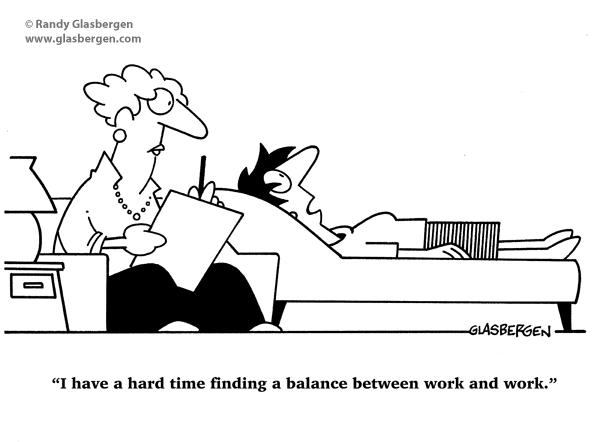Addiction runs in my family—primarily alcoholism. Some addictions get handeddown from one generation to the next. I thought I got skipped and was free and clear.
But my relationship with my wife–who is my loving reflection–has helped me seewho I truly am and it has revealed to me (and I have finally admitted) that I’m aworkaholic.
When I was a single aspiring entrepreneur, my “work ethic” was applauded by family members, friends, clients, and my readers. Workaholism is the only addiction that we celebrate in society. But my wife knew that I couldn’t control myself. Instead of pouring alcohol into my soul, I‘ve been pouring my soul into work.
I believe in hard work, but there is a very thin line between workaholism and high performance.
A workaholic works hard in unhealthy unsustainable ways and feels burned out.
A high performer works hard in healthy sustainable ways and feels inspired.
Workaholism and high performance look the same from the outside, but the difference is how the person feels on the inside.

But work can’t contain all of who I am. No cubicle, computer, or corporation cancontain who any one of us truly is. And there are more containers to pour into and fill in life than just work and our bank accounts.
I don’t have all the answers. Once a workaholic, always a workaholic right? However, I’ve made some major improvements in relationship to work and I’ve captured my recovery thus far in the following 7 steps.
- Recognize It: I realized that the source of my stress, tiredness, illnesses, and unhappiness in other ares of my life stemmed from work. I love what I do, but how I did it wasn’t working and my work was spilling over into and intoxicating other things that I consider to be important to me.
- Admit It: I had to literally look in the mirror and say repeat to myself “I’m a workaholic.” I also wrote it down. Admitting that there is a problem is the first step to solving it. It’s one thing to recognize the signs—it’s another thing to admit that they are speaking to you.
- Verbalize It: I share that I am a workaholic with the people closest to me. I told my wife (even though she already knew). I told me closest friends. And it was even helpful telling strangers. Verbalizing it led to a flood of love and support.
- Redefine It: From there, I revisited values and definitions of success, work, money, fun, enough, and time. I had the support of a coach. She asked me the right questions and held safe space for me to answer them honestly verbally and in writing.
- Redesign It: After defining what was important to me, I started to put those beliefs into action by redesign how I was doing what I was doing. Change your day, change your life. Non-coincidentally, I began bumping into people who were living and working differently, yet still high performers and doing well financially.
- Try It: I began trying out new ways of living and working. I started with small daily changes like meditating, taking my full lunch, walking with my wife, and no work email after 6pm. I keep the things that work for me and let go of the things that don’t.
- Measure It: I create accountability through numbers and people. I made a scoreboard that allowed me to keep track of how many times I was doing my daily rituals and I shared my progress and challenges with those closest to me.
My journey has just begun. I don’t plan on retiring anytime soon. So as long as I’m working to earn income, I’ll also have to be working on myself.
I would love to hear your comments below on the things you do to stay in a space of high performance and keep workaholism at bay.
Thanks for listening,






